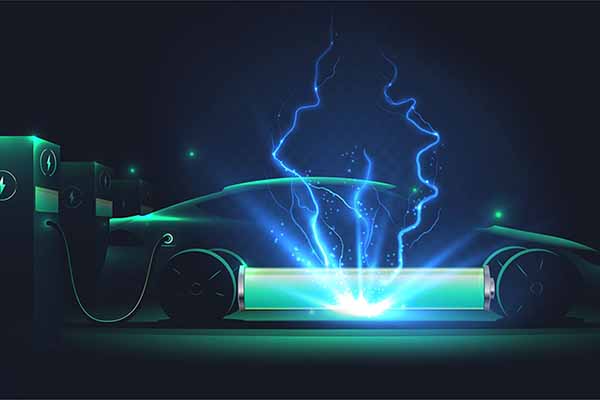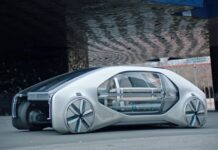We descend or ascend the form of communication and trade has defined human-kind to where we have reached today. Vitally, transport has been an integral part of this human evolution. Now with growing urbanization and population, vehicles are becoming a part of tomorrow’s sustainable future. Hence today the need for green energy is where we have scopes changing the gears for a better and healthy future. Hence, Electric Vehicles (EVs) has become a crucial game-changer for the complete Automobile Industry. EVs are showcasing quick potential to oust traditional combustion engines. Fully electric vehicles (EV) have zero tailpipe emissions and are much better for the environment. The electric vehicle revolution is here.
On the other hand, a step forward is Hybrid electric vehicles (HEVs). HEVs typically use less fuel than similar conventional vehicles because they employ electric-drive technologies to boost vehicle efficiency through regenerative braking—recapturing energy otherwise lost during braking. Plug-in hybrid electric vehicles (PHEVs) and all-electric vehicles, also referred to as battery electric vehicles (BEVs), are both capable of being powered solely by electricity, which is produced in the United States from natural gas, coal, nuclear energy, wind energy, hydropower, and solar energy.
EV, HEV, and PHEV: What’s the Difference?
- There are several types of electric vehicles out on the market, and understanding their differences is important, especially if you are considering purchasing one. There are three main types, and they are:
EV – Electric Vehicle, also known as a Battery Electric Vehicle (BEV) - HEV – Hybrid Electric Vehicle
- PHEV – Plug-in Hybrid Electric Vehicle
Below we will go into more detail explaining the above and their differences, as well as their maintenance needs.
EV – Electric Vehicle
An Electric Vehicle (EV) is a fully electric vehicle that has rechargeable batteries. These batteries are recharged from the grid and are the only source of power for the vehicle, as they do not have a tank for gasoline. When referring to these vehicles, they are also called a BEV.
HEV – Hybrid Electric Vehicle
Hybrid Electric Vehicles are both electric and gas-powered. The energy that powers their batteries is gained through regenerative braking or while driving using the combustion engine. In a standard gas-powered car, the energy from the braking is lost in the form of heat. This happens by way of the rotors and brake pads. The grid cannot charge these types of electric vehicles.
PHEV – Plug-in Hybrid Electric Vehicle
PHEVs have both an engine and an electric motor. Like a regular hybrid, PHEVs can recharge their batteries through regenerative braking or with the engine. The primary difference between an HEV and a PHEV is the addition of a charging port into the PHEV. In this way, a PHEV can operate more like a EV, driving off the battery and recharging off the grid, only using the combustion engine when the battery is depleted. PHEV batteries are typically higher capacity than HEV batteries.
Another difference is the distance they can travel before their gas engines turn on. A PHEV will run anywhere from 10 to 40 miles, whereas an HEV will only run less than 2 to 3 miles.
All of the above vehicles will require maintenance for their batteries, also called energy storage systems. To learn more, continue reading below.
Energy Storage System Types
Batteries are essential to EVs, HEVs, and PHEVs. There are lithium-ion, nickel-metal hydride, and lead-acid energy storage systems. In addition to the above, there are also ultracapacitors that are used to provide additional power during acceleration.
Maintenance and Recycling Batteries
To maintain these vehicles, it is important to have them regularly checked per the car manufacturer. So the question most commonly asked is, do EVs require extra vehicle maintenance? The answer to that question is no.
Powertrain
Most EV, HEV, and PHEV vehicle manufacturers offer long warranties on powertrains, which speaks to their lasting reliability. The powertrain is simple and requires little maintenance (replacing fluid) when compared to gas-powered vehicles.
Brakes: With the regenerative braking system, brake wear is lower for those that rely on friction braking. However, components of friction braking such as rotors, pads, and brake fluid will still need to be replaced at some point.
Cooling: The energy storage systems on these vehicles use a coolant or refrigerant to keep key parts (charger, inverter, and battery pack) cool. Therefore, maintenance for cooling systems may require infrequent coolant flushes to help the vehicle’s efficiency.
Batteries: As for the maintenance of EV batteries, it is more about prolonging their life. Over time the packs will degrade, and the ability to hold a charge will decrease gradually. To prolong the life of these batteries, you can do the following:
- In storage and in use, minimize high and low temperatures
- Minimize the urge to want to stay at a 100% state of charge/Don’t stay at 0% for very long either
- Although convenient, avoid fast charging
- Avoid storage in high moisture areas
- Avoid damage to mechanical components
- Ultimately, be sure to follow the manufacturer’s calibration instructions/This will often require you to complete an initial full discharge
EV vs. HEV and PHEV Maintenance
When comparing all three electric vehicle types, we can see that the HEV and the PHEV will require more maintenance because it has a conventional combustion engine and an electric drivetrain. However, overall, the maintenance is significantly less when put up against an internal combustion engine.
Recycling
As with all batteries, they do have a life cycle and will need to be recycled. The recycling process for EV batteries typically involves recovering the individual parts and materials of the battery so as not to release hazardous toxins into the environment.
Since the EV market is fairly new, most EVs have yet to reach that point. Therefore, recycling these batteries is still undergoing research; while some manufacturers are reusing the batteries in their plants, others are opening recycling facilities
Defining The Technical aspects of EV and HEV Batteries
Temperature range and uniformity in a pack are important factors for obtaining optimum performance from an EV or HEV battery pack. All the modules in a pack should operate within the optimum temperature range suitable for the particular electrochemical pair used. Equally important, modules need to be operated at uniform temperatures because uneven temperature distribution in a pack leads to different charge/discharge behavior, which, in turn, leads to electrically unbalanced modules and reduced pack performance. Developing capabilities specific to battery pack thermal management issues include a calorimeter to measure heat generation from batteries under cycling, heat capacity (or specific heat), thermal conductivity estimation, and module temperature distribution visualization using thermal imaging. The information is used for evaluation, analysis, and design of modules and battery packs (3). We have investigated thermal characteristics and performance of various EV and HEV modules and cells with various electrochemistry such as lead-acid, lithium-ion, NiMH, lithium-ion polymer, and nickel-zinc.
Defining Innovations
On an average-configured EV, the battery pack is usually the most expensive single component, constituting about 35%–45% of total manufacturing cost. Battery performance influences the overall performance of EVs in terms of power output, driving range, cycle life, safety, etc. However, perfect battery chemistry is not easy to be found. Different anode, cathode, or electrolyte materials exhibit dissimilar pros and cons under various operation conditions. In addition, the raw material prices fluctuate violently due to the unpredictable supply and demand relationships worldwide such as the political unstableness in the Democratic Republic of the Congo (the production place of more than 70% of the world’s cobalt) which significantly squeezes the cobalt’s supply, environmental devastation by over draining the underground water in South America (more than 60% of the world’s lithium reserves are in Peru, Bolivia, Chile, Argentina, etc.) which restricts further mining activities from the giant oversea mining companies, or the novel battery material development which diminishes the cobalt or nickel’s constituent percentage in the battery cells. Nonetheless, ideal energy storage chemistries and materials should always be capable of balancing thermal performance and safety as well as delivering satisfied and reliable power output during the whole battery lifecycle.
Let’s look At the Top Five (5) HEVs in India:
| Hybrid Vehicle | Fuel Economy | Power | Price |
| Toyota Camry Hybrid | 19.2 km/L | 160 kW/215hp | Rs. 50 Lakh |
| Lexus 300h Exquisite Hybrid | 22.6 km/L | 160 kW/214hp | Rs. 56.65 Lakh |
| Maruti Suzuki Baleno Hybrid | 23.87 km/L | 66 kW/83bhp | Rs. 7.45 Lakh |
| MG Hector Hybrid | 15.8 km/L | 141 bhp | Rs. 16.5 Lakh |
| Volvo XC90 Recharge | 16 km/L | 223 kW/303hp | Rs. 96 Lakh |
Courtesy: https://www.charzer.com/blog/2022/02/12/top-5-hybrid-electric-vehicles-in-india-2022/
Here are the Top Five(5) EVs in India
1. Tata Nexon EV
With a 3 Phase Permanent Magnet Synchronous Motor, the Nexon EV is one of the most impressive EV SUVs out there. Its Li-ion Polymer battery is equipped with liquid cooling to ensure that temperatures remain relatively low even after a long drive.
Even though it relies on electricity, this car can generate impressive peak powers of 127bhp. Moonlit Silver, Signature Teal Blue and Glacier White are the three colour options you can choose from.
- Battery Capacity – 30.2kWh
- Distance per Charge – 312 km/full charge
- Recharge Time – 0-80% charge in 60 minutes with a fast charger.
- Awards – Winner of Subcompact SUV of the Year Award at the 2018 edition of NDTV’s Car and Bike Awards. (1)
- Price – Starting from Rs.13.99 lakh.
2. MG ZS EV
The British MG brand offers a premium EV, which counts as one of the top electric cars in India. It is powered by a similar motor like that in the Tata Nexon EV.
This impressively designed SUV boasts several brilliant features, including a 448-litre boot space, diamond-cut machined alloy wheels and power-assisted electric steering. It can also produce an immense torque of 353 Nm.
- Battery Capacity – 44.5kWh
- Distance per Charge– 340km/full charge
- Recharge Time – Fast charging in 50 minutes. The normal charge takes 6-8 hours.
- Price – Starting from Rs.20.88 lakh.
3. Tata Tigor EV
Powered by a three-phase AC induction motor, this electric sedan comes in Egyptian Blue and Pearlescent White colour options. The 310-litre boot space is an additional facility that can be very handy while storing luggage.
You can expect max powers of 40bhp from this vehicle, along with peak torque of 105 Nm. Under ideal driving conditions, this car can reach speeds of 80kmph.
- Battery Capacity – 21.5kWh
- Distance per Charge – 142km/full charge
- Recharge Time – Fast charging in 90 minutes and normal charging in six hours.
- Price – Starting from Rs.9.54 lakh.
4. Hyundai Kona Electric
Equipped with the advanced Permanent Magnet Synchronous Motor (PMSM), the Kona Electric is considered one of the best electric vehicles in India. It has a fierce pickup reaching 100kmph in just under 10 seconds.
Along with its spectacular mileage, this car can produce immense torque at 395 Nm. Power-wise, the Kona Electric can generate around 134bhp under ideal conditions.
- Battery Capacity – 39.2kWh
- Distance per Charge – 452km/full charge
- Recharge Time – 57-minute fast charging and normal charging in six hours.
- Awards won – Winner of Electronic Vehicle of the Year Award at the 2019 Tech and Auto Awards. (4)
- Price – Starting from Rs.23.71 lakh.
5. Mahindra e2oPlus
A smaller body and a bevy of colour options are what define the e2oPlus from Mahindra. Although nowhere nearly as powerful as the electric SUVs in this list, it is perfect as a commute vehicle. Its 3-phase, AC Induction Motor is equipped with a lithium-ion battery, weighing 84 kg.
It can generate maximum torque and power of 70Nm and 25bhp, respectively.
- Battery Capacity – 10.08kWh
- Distance per Charge – 99.9km/full charge
- Recharge Time – 75 minutes with a fast charger and six hours with a standard charger.
- Price – Starting from Rs.7.57 lakh.
References: https://afdc.energy.gov/vehicles/electric_basics_hev.html | https://www.sciencedirect.com/science/article/pii/S2589004222000141 | https://www.godigit.com/motor-insurance/car-insurance/find/best-electric-cars-in-india















